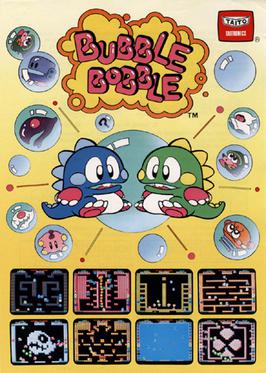
Bubble Bobble is a 1986 platform game developed and published by Taito for arcades. It was distributed in the United States by Romstar, and in Europe by Electrocoin. Players control Bub and Bob, two dragons that set out to save their girlfriends from a world known as the Cave of Monsters. In each level, Bub and Bob must defeat each enemy present by trapping them in bubbles and popping, who turn into bonus items when they hit the ground. There are 100 levels total, each becoming progressively more difficult.

Roguelike is a style of role-playing game traditionally characterized by a dungeon crawl through procedurally generated levels, turn-based gameplay, grid-based movement, and permanent death of the player character. Most roguelikes are based on a high fantasy narrative, reflecting their influence from tabletop role-playing games such as Dungeons & Dragons.
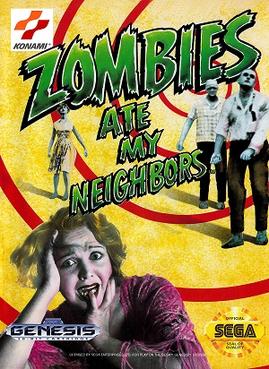
Zombies Ate My Neighbors is a run and gun video game developed by LucasArts and published by Konami for the Super NES and Sega Genesis consoles in 1993.
A comfort object, more formally a transitional object or attachment object, is an item used to provide psychological comfort, especially in unusual or unique situations, or at bedtime for children. Among toddlers, a comfort object often takes the form of a blanket or a stuffed animal, doll or other toy, and may be referred to by a nickname such as blankie.
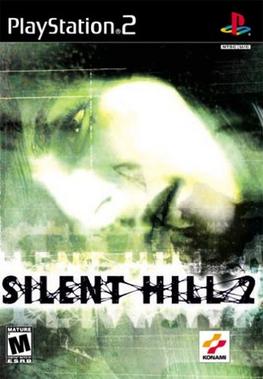
Silent Hill 2 is a 2001 survival horror game developed by Team Silent, a group in Konami Computer Entertainment Tokyo, and published by Konami. The game was released from September to November, originally for the PlayStation 2. The second installment in the Silent Hill series, Silent Hill 2 centers on James Sunderland, a widower who journeys to the town of Silent Hill after receiving a letter from his dead wife. An extended version containing a bonus scenario, Born from a Wish, and other additions was published for Xbox in December of the same year. In 2002, it was ported to Microsoft Windows and re-released for the PlayStation 2 as a Greatest Hits version, which includes all bonus content from the Xbox port. A remastered high-definition version was released for the PlayStation 3 and Xbox 360 in 2012 as part of the Silent Hill HD Collection.
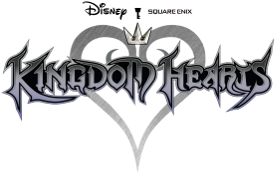
Kingdom Hearts is a series of action role-playing games created by Japanese game designers Tetsuya Nomura and Shinji Hashimoto, being developed and published by Square Enix. It is a collaboration between Square Enix and The Walt Disney Company, and is under the leadership of Nomura, a longtime Square Enix employee.
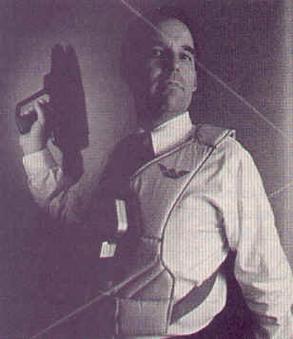
Worlds of Wonder (WoW) was an American toy company founded in 1985 by former Atari sales president Don Kingsborough, and former Atari employee Mark Robert Goldberg. Its founding was inspired by a prototype that became its launch product, Teddy Ruxpin. In 1986, it launched Lazer Tag and filed an IPO which Fortune magazine called "one of the year's most sought after stock sales". WoW partnered with the young Nintendo of America as retail sales distributor, crucial to the landmark launch and rise of the Nintendo Entertainment System from 1986 to 1987.
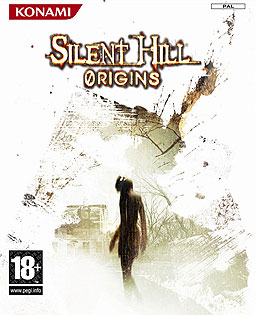
Silent Hill: Origins is a 2007 survival horror game developed by Climax Action and published by Konami Digital Entertainment. It was released worldwide in late 2007 for the PlayStation Portable, beginning in early November with the United Kingdom. A port for the PlayStation 2 was released worldwide in early 2008, beginning in March with North America. The fifth installment in the Silent Hill series, Origins is a prequel to the first game (1999). Set in the series' eponymous, fictional American town, Origins follows trucker Travis Grady as he searches for information about a girl whom he rescued from a fire. Along the way, he unlocks his repressed childhood memories. Gameplay uses a third-person perspective, and emphasizes combat, exploration, and puzzle-solving, similar to the previous installments.

Silent Hill: Shattered Memories is a 2009 survival horror game developed by Climax Studios and published by Konami Digital Entertainment. It was released in December for the Wii and ported to the PlayStation 2 and PlayStation Portable platforms in January 2010. In April 2014, it appeared on the PlayStation Network in Europe.
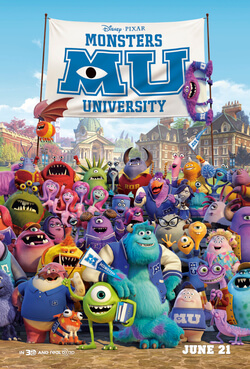
Monsters University is a 2013 American animated comedy film produced by Walt Disney Pictures and Pixar Animation Studios and released by Walt Disney Studios Motion Pictures. It is the prequel to Monsters, Inc. (2001). It was directed by Dan Scanlon, produced by Kori Rae, and written by Scanlon and the writing team of Dan Gerson and Robert L. Baird. John Lasseter, Pete Docter, Andrew Stanton, and Lee Unkrich served as the film's executive producers. The music for the film was composed and conducted by Randy Newman, making it his seventh collaboration with Pixar. Monsters University tells the story of the main characters of Monsters, Inc., James P. Sullivan and Mike Wazowski, and their time at college where they start off as bitter rivals but slowly become best friends. They are paired in a series of competitive scare-oriented events with their fraternity, and Wazowski ultimately learns that some things cannot be taught. John Goodman, Billy Crystal, Steve Buscemi, Bob Peterson, and John Ratzenberger reprise their roles as James P. Sullivan, Mike Wazowski, Randall Boggs, Roz, and the Abominable Snowman, respectively, while the new cast were joined by Helen Mirren, Alfred Molina, Peter Sohn, Joel Murray, Sean Hayes, Dave Foley, Charlie Day, Nathan Fillion and Aubrey Plaza, while Bonnie Hunt, who voiced Ms. Flint in the original film, voices Mike's teacher Mrs. Karen Graves.

Sleeping Dogs is a 2012 action-adventure video game developed by United Front Games and published by Square Enix. It was released for PlayStation 3, Xbox 360 and Windows. Set in contemporary Hong Kong, the story follows martial artist and undercover police officer Wei Shen who infiltrates the Sun On Yee Triad organization. Gameplay focuses on Wei Shen's martial arts moves, fighting, shooting and parkour abilities, and on gadgets that can be used for combat and exploration. Players must complete missions to unlock content and continue the story, but they may instead freely roam the game's open world environment and engage in both legal and criminal activities. The latter may incite a police response, the intensity of which is controlled by a "heat" system. Actions such as fighting, driving and racing grant Shen statistical rewards and earn the player achievements.

Silent Hill: Downpour is a 2012 survival horror game developed by Vatra Games and published by Konami. Downpour is set in the series' eponymous fictitious American town and centers on Murphy Pendleton, a prisoner who enters the town, periodically entering the otherworld, leading him to unlock repressed memories. The game uses a third-person view and can be played in 3D. It was released in March 2012.
Monster High is an American multimedia-supported fashion doll franchise created by toy designer Garrett Sander and launched by Mattel in 2010. The show is aimed at children ages 7-14, the franchise features characters inspired by monster movies, sci-fi horror, thriller fiction, folklore, myths and popular culture, centering around the adventures of the teenage children of monsters and other mythical creatures attending a high school of the same name.

Stacking is an adventure puzzle video game developed by Double Fine Productions and published by THQ in February 2011 for the Xbox 360 and PlayStation 3 video game consoles. A Windows version was released in March 2012, and OS X and Linux versions were released in May 2013. Like Double Fine's previous Costume Quest, it is a smaller title created during the development period of Brütal Legend.

Silent Hill: Book of Memories is a 2012 dungeon crawler video game developed by WayForward Technologies and published by Konami. Released for the PlayStation Vita, it is a spin-off of the Silent Hill video game series. It features a player-created protagonist who receives the titular book on their birthday, which contains their entire life story, and makes changes to it with unforeseen and often unfavorable consequences. Book of Memories features gameplay elements from role-playing games: as the player character traverses the dungeons and defeats monsters there, they gain experience points and thus improve their respective abilities. The character progresses from each themed level by collecting pieces of a puzzle and then solving the puzzle. Five endings are available based on the character's alignment; the sixth is a joke ending in the tradition of previous Silent Hill games.
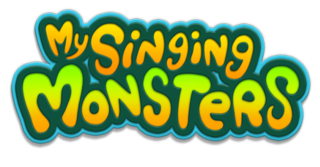
My Singing Monsters is a 2012 video game franchise developed by Big Blue Bubble. The first game of the series was published and released with help by Canada Media Fund on September 4, 2012, for Apple iOS. Ports of the game for other operating systems were later released, including versions for Android, Amazon Kindle Fire, Barnes & Noble Nook, and Steam. The game was also released on the PlayStation Vita portable console. Since its release, My Singing Monsters has grown into a multimedia franchise, with a prequel, several spin-off games, books, live events and series, and a board game. On May 12, 2021, Big Blue Bubble announced that the series would be releasing its first console title, My Singing Monsters: Playground, on November 9, 2021.

The Sims FreePlay is a strategic life simulation game developed by EA Mobile and later with Firemonkeys Studios. It is a freemium version of The Sims for mobile devices; it was released for iOS on December 15, 2011, released for Android on February 15, 2012, released for BlackBerry 10 on July 31, 2013, and released for Windows Phone 8 on September 12, 2013.
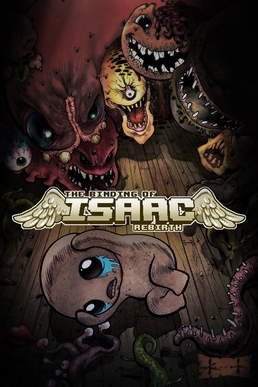
The Binding of Isaac: Rebirth is a roguelike indie game designed by Edmund McMillen and developed and published by Nicalis. Rebirth was released for Linux, Microsoft Windows, OS X, PlayStation 4 and PlayStation Vita in November 2014, for Xbox One, New Nintendo 3DS and Wii U in July 2015, for iOS in January 2017 and for Nintendo Switch in March 2017. The PlayStation 5 and Xbox Series X/S versions were released in November 2021.

Daylight is a survival horror video game developed by Zombie Studios and published by Atlus for Microsoft Windows and PlayStation 4. It was the first game to be powered by Unreal Engine 4.

Dungeon of the Endless is a roguelike tower defense game developed and published by Amplitude Studios. It is the third game of their loosely connected Endless series, which includes Endless Space and Endless Legend. It was released in October 2014 for Microsoft Windows and OS X, August 2015 for iOS, and for Xbox One in March 2016. The PlayStation 4 and Nintendo Switch ports were released in May 2020. A revamped version for iOS and Android devices, called Dungeon of the Endless: Apogee, was released in March 2021 by Playdigious.

















